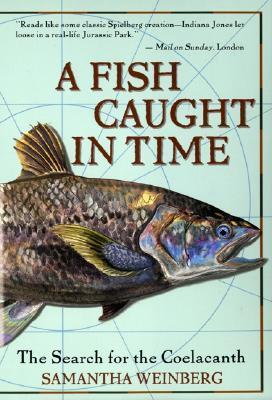What do you think?
Rate this book


Just before Christmas in 1938, the young woman curator of a small South African museum spotted a strange-looking fish on a trawler's deck. It was five feet long, with steel-blue scales, luminescent eyes and remarkable limb-like fins, unlike those of any fish she had ever seen. Determined to preserve her unusual find, she searched for days for a way to save it, but ended up with only the skin and a few bones.
A charismatic amateur ichthyologist, J.L.B. Smith, saw a thumbnail sketch of the fish and was thunderstruck. He recognized it as a coelacanth (pronounced see-la-kanth), a creature known from fossils dating back 400 million years and thought to have died out with the dinosaurs. With its extraordinary limbs, the coelacanth was believed to be the first fish to crawl from the sea and evolve into reptiles, mammals and eventually mankind. The discovery was immediately dubbed the "greatest scientific find of the century."
Smith devoted his life to the search for a complete specimen, a
fourteen-year odyssey that culminated in a dramatic act of international piracy. As the fame of the coelacanth spread, so did rumors and obsessions. Nations fought over it, multimillion-dollar expeditions were launched, and submarines hand-built to find it. In 1998, the rumors and the truth came together in a gripping climax, which brought the coelacanth back into the international limelight.
A Fish Caught in Time is the entrancing story of the most rare and precious fish in the world--our own great uncle forty million times removed.
220 pages, Paperback
First published February 6, 2001
Dressed in a neat black suit with a fake fur collar (which, she joked, was almost as old as the colecanth), Marjorie approached the microphone to deliver a short speech. She wanted to thank the South African Mint, she said, for the great honor, and also to trace briefly the events that led to her discovery. As she spoke about Captain Goosen, Bird Island, and J.L.B. Smith, about seeing the beautiful blue fish for the first time and her absolute conviction that it had to be saved, she put down her prepared notes. Speaking only from her sharp memory, she transported the audience back sixty years to a small museum in East London, and a young woman who was determined that the strange fish she had found was something special and had to be saved.